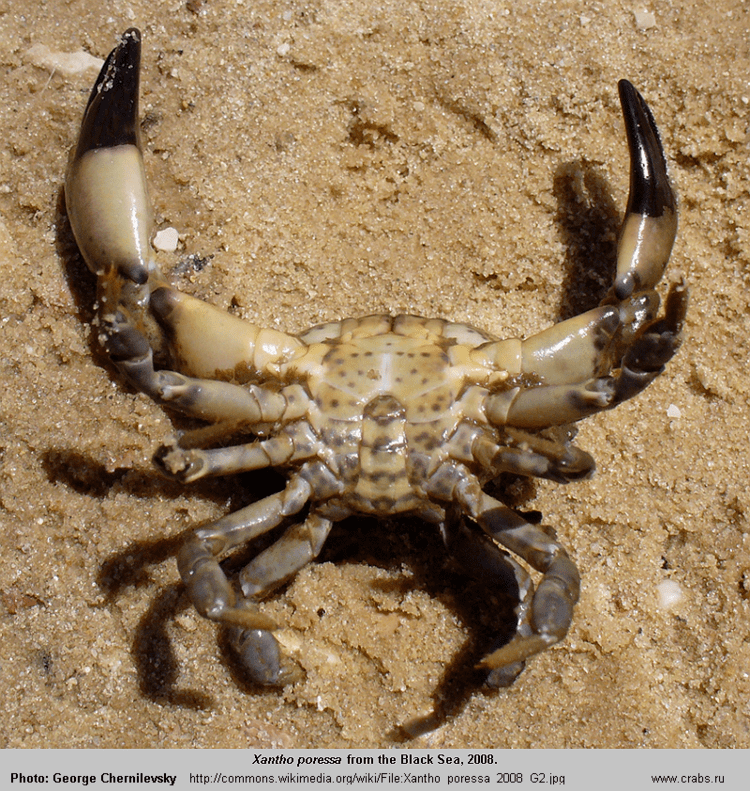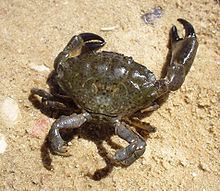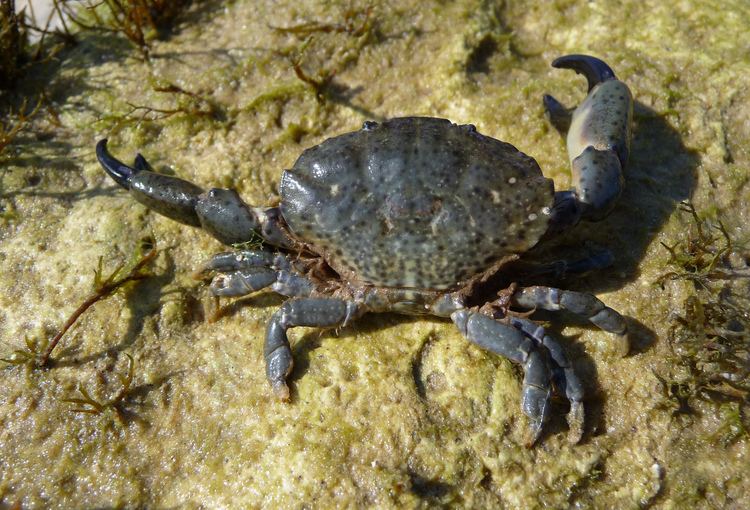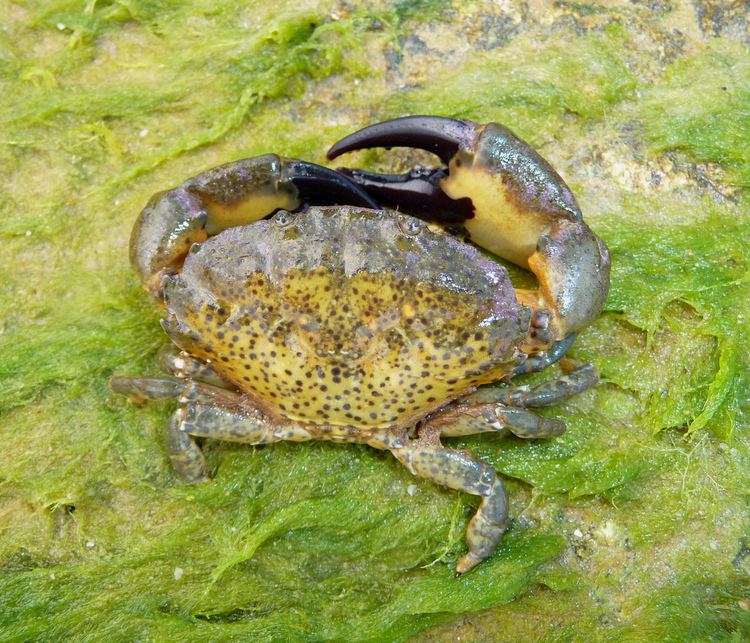Subphylum Crustacea Order Decapoda | Infraorder Brachyura Rank Species | |
 | ||
Similar Xantho, Pachygrapsus marmoratus, Pilumnus hirtellus, Eriphia verrucosa, Xantho hydrophilus | ||
Xantho poressa, the jaguar round crab, is a species of crab from the eastern Atlantic Ocean It is one of four species in the genus Xantho.
Contents

xantho poressa 01 video dr oleg kovtun
Description
The juveniles of Xantho poressa are cryptically coloured as camouflage among the epibionts on the leaves of Posidonia with a variable carapace colour which can be yellowish, reddish, brown or dark grey with patches of other colour, usually white. The pereiopods are usually banded with dark brown or black bands alternating with white or transluscent stripes or spots, although the fifth pereiopod is brighter and often unmarked. The adults are uniformly dark grey in colour and they leave the seagrass beds for more open rocky substrates.
Distribution

Xantho poressa is distributed throughout the Black Sea and the Mediterranean Sea and into the warmer parts of the north eastern Atlantic to the Canary Islands.
Biology

The larvae of Xantho poressa go through 4 zoeal and 1 megalopal stage, which is typical of most of the related species of crabs in the subfamily Xanthinae. The duration of each zoeal stage lasted 2-4 days and the megalopa stage lasted an average of 10 days, with the first juvenile crab stage being reached after 23 days. Juveniles live in Posidonia meadows until their last moult, at which point they migrate to the nearest rocky substrate. In the Black Sea X. poressa is common near the shore line at depths of less than 1m, it is mainly found stones on substrates of pebble and crushed rock; it is rare on the other substrates and may occur down to 15 m in depth.

